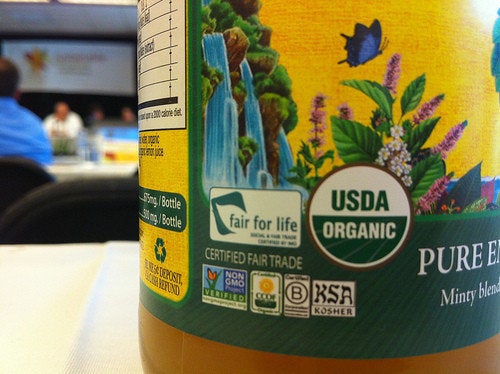
Consumers today are more health conscious than ever. Nutrition trends for 2012 stress healthier, sustainable, whole and organic foods. The "slow food" movement emphasizing "good, clean and fair" food has become a way of life for many. Beyond these hot topics, mindful individuals want to make healthy, nutritious choices. Understanding nutrition claims and market tricks will allow the average shopper to make quick, healthy choices without spending hours comparing labels.
Certain claims on packaged items are regulated by the FDA. A product with the following statements must abide by several restrictions:
- Fat Free: Less than half a gram of fat per serving
- Low Calorie: No more than 40 calories per serving
- Sugar Free: Less than half a gram of sugar per serving
- Low Sodium: No more than 140 mg of sodium per serving
- High, rich in, excellent source of: 20 percent or more of the recommended daily value of the nutrient
- Less, fewer, reduced: 25 percent or less of the named nutrient
What are some other marketing terms that aren't standardized by the FDA?
- Organic: Must meet the USDA standards for organic production, without most synthetic fertilizers, pesticides, growth hormones, antibiotics and genetically engineered ingredients. Being labeled "organic" has nothing to do with the calorie, fat or sugar content of a food. I recommend going organic for particular fruits and vegetables- especially those that are considered part of the "dirty dozen."
Be wary of packaged foods that claim to be the newest, ultra-healthy solution. Cookies, cakes and snack foods are just that. They won't ever replace your best choices: whole foods with real ingredients.
For more by Carrie Wiatt, M.S., click here.
For more on diet and nutrition, click here.
Flickr photo by photologue_np